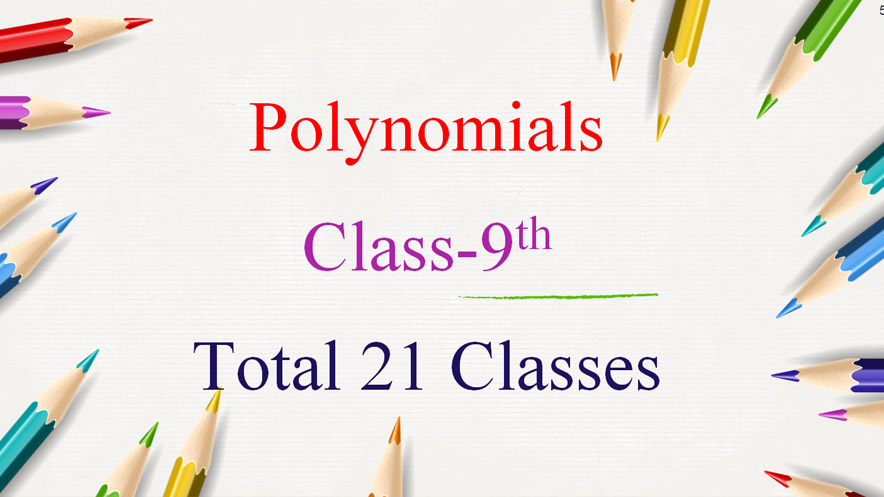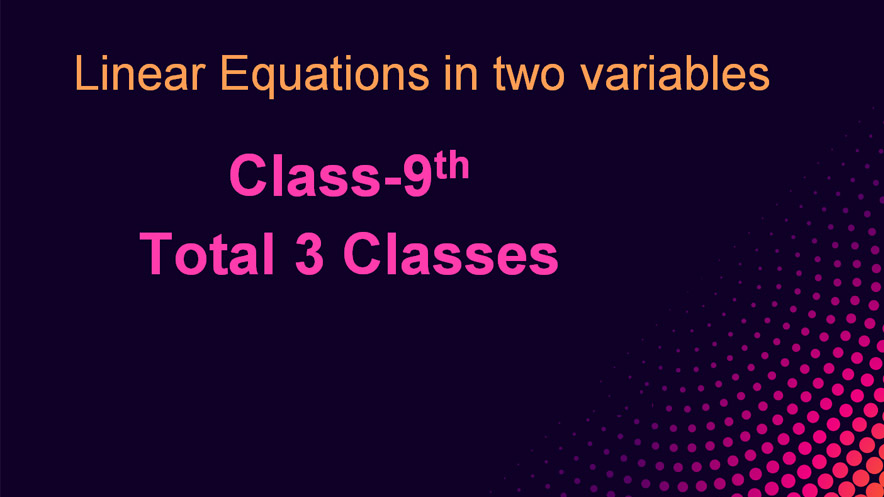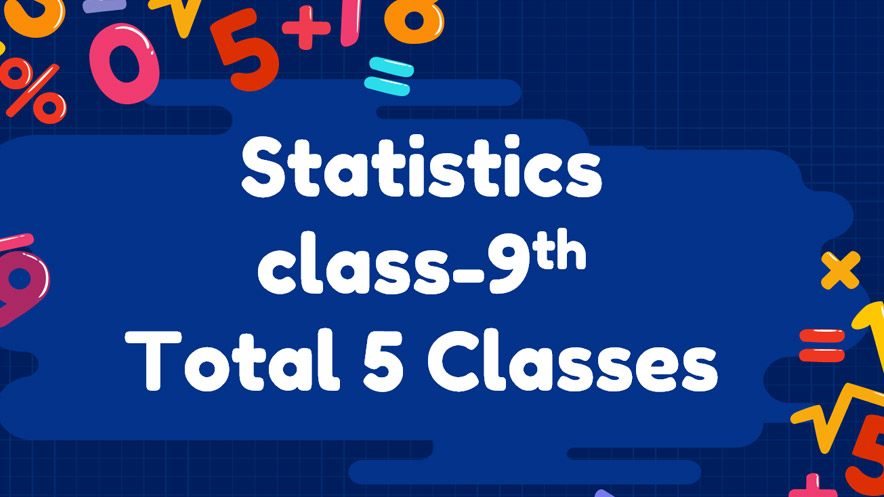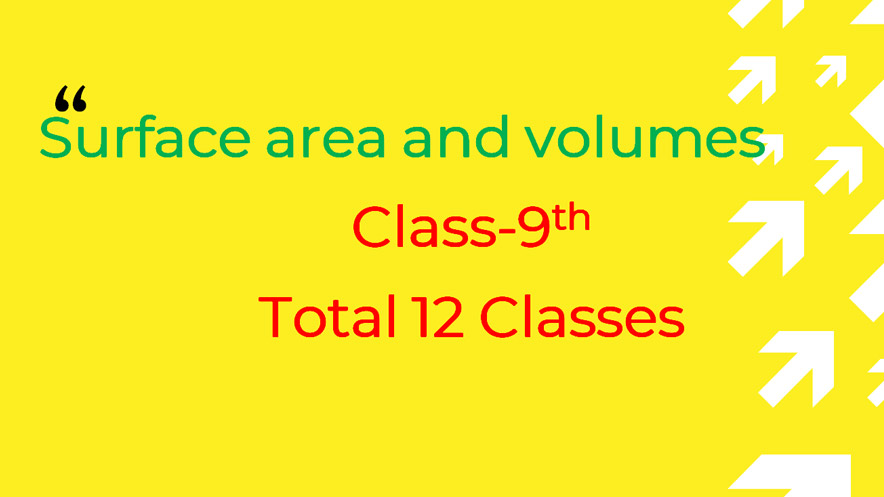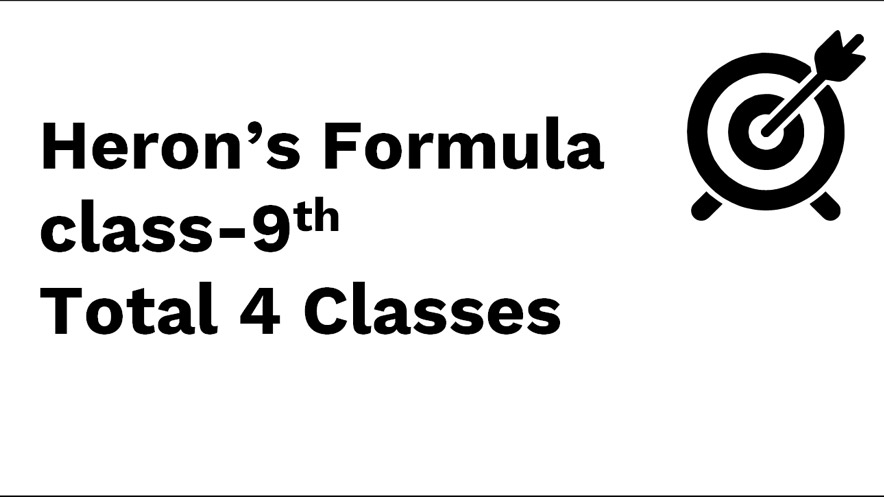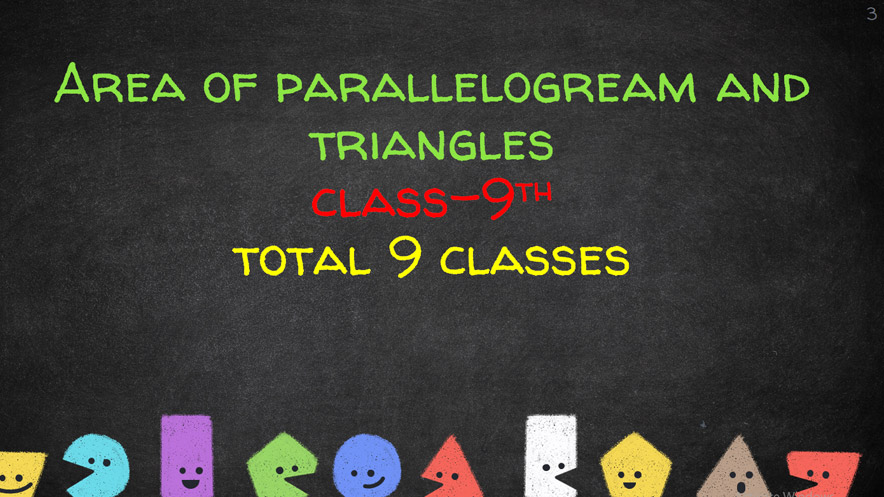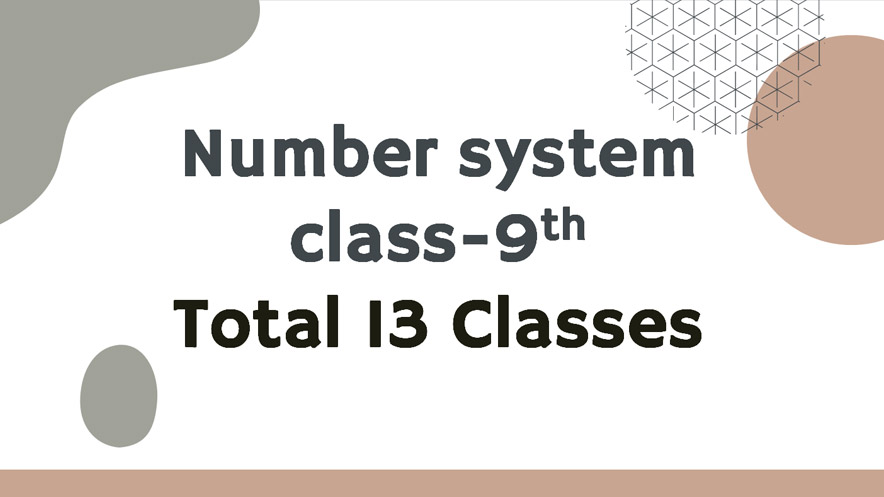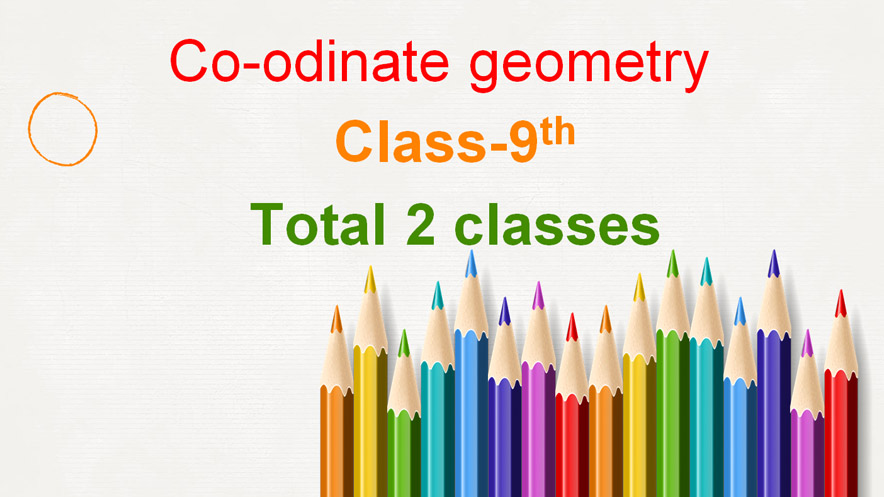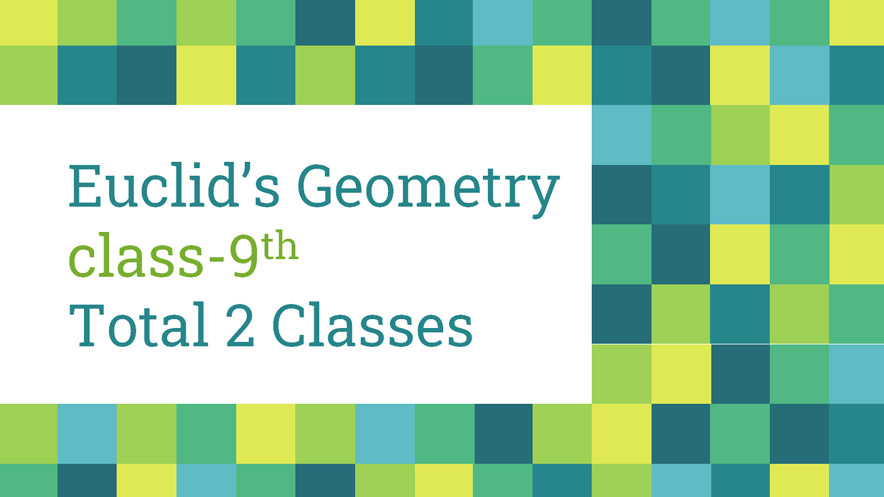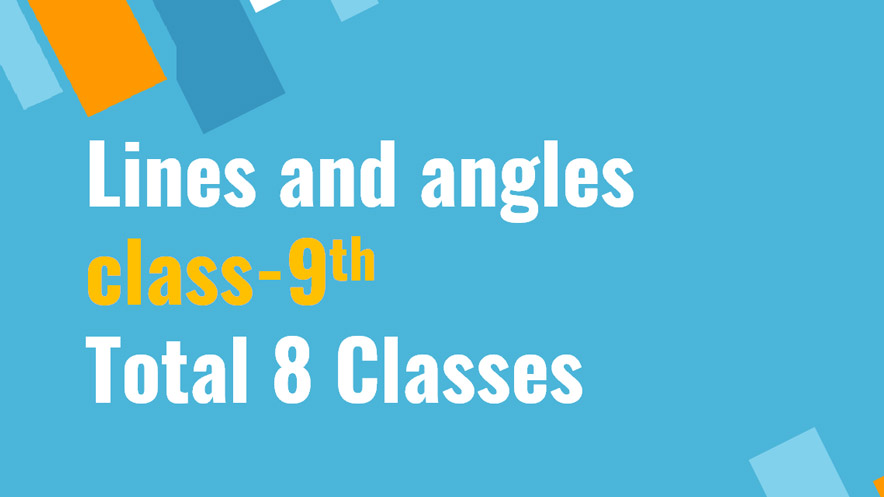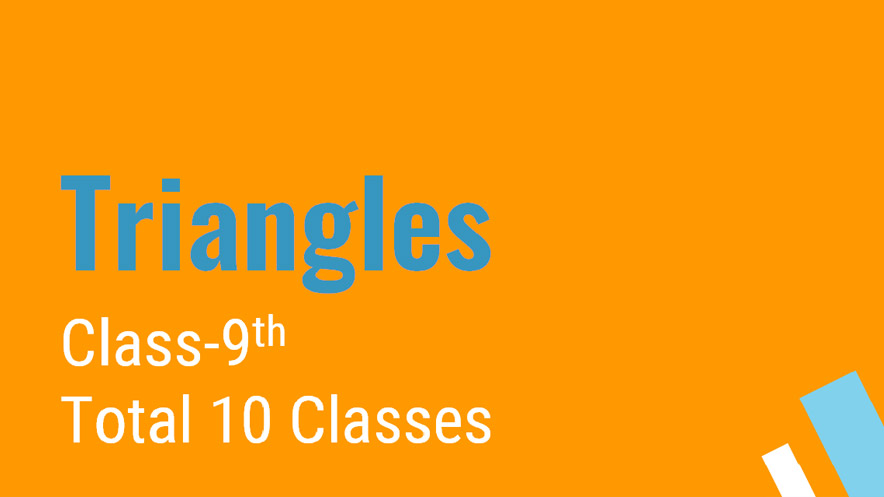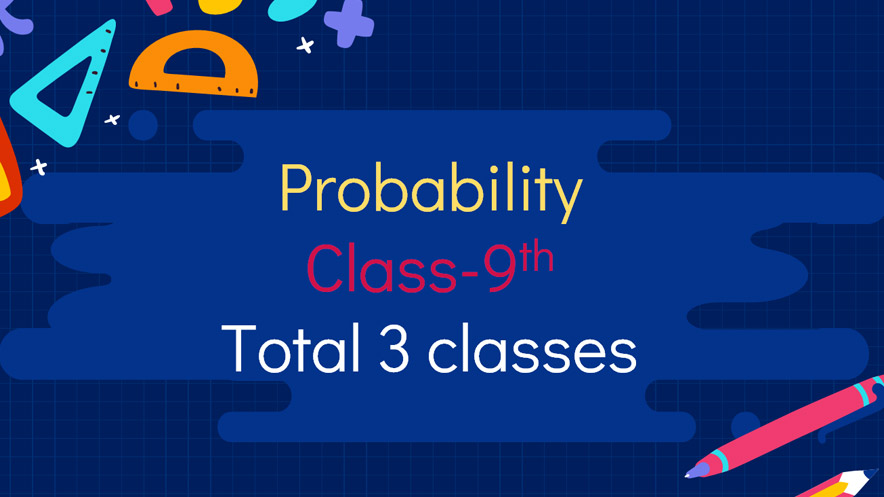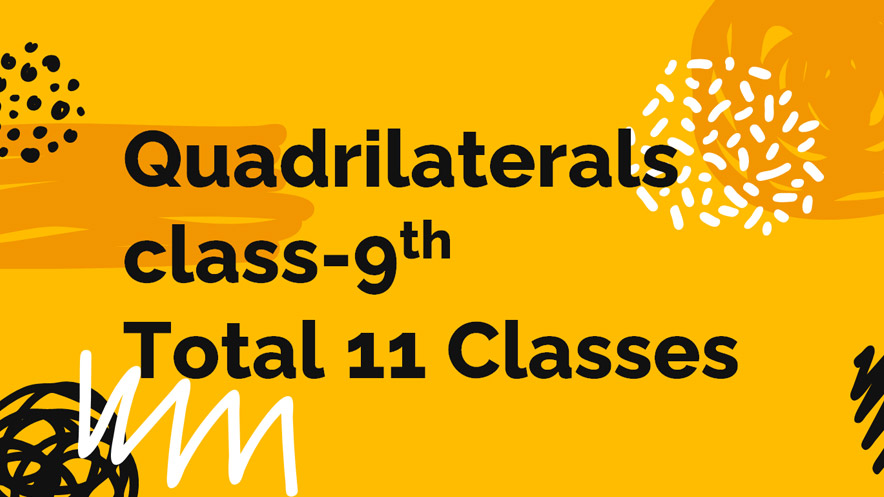

9th-Class
Let’s Score 100 in Class 9th
Build stronghold on mathematics, Stong foundation for IIT/NEET/CA-CPT. Study from Sachin Sir, Mentoring IIT Students from last 20 yrs.
Trumath Experience
Let’s hear it from previous Students!
Anuj Dhawan - All India Rank of 21
Prabhpreet - IIT JEE 2017 All India Rank 17
Sanchit Nit jalandhar
1. Regular Pre-Scheduled Interactive Classes
- Complete preparation for 9th as per CBSE/ICSE curriculum
- Student will get the order of chapter according to their respective schools
- Student will get classes on daily basis just like a regular class
- Question in-between classes with completet preparation explaination
- Student can attend the class any time of the day according to their speed
2. Regular Homework & Daily Practice Problems
- Student will get regular homework after every Topic
- Student has to submit the homework to get it checked
- Student will get daily practice problem after every class
- They will get a personal teacher for any doubts in homework or daily practice problmes
3. Weekly Tests
- Students will get test every Sunday on the last topic they have done
- Full-Syllabus & regular Tests
- Special preparatory classes for Exams
- Previous years exam paper solving Test practice
- Regular revision classes
4. Doubt Clearing Sessions
- Now Student can ask their doubts anytime of the day
- No more hesitateing while asking doubts
- As they will get a personal teacher to whom they can ask thier doubts any time of the day
- No time restiction, student can ask doubts anytime of the day, any number of times
Class Schedule
Date
Topic
| Day 1 | REAL NUMBERS – Representation of natural numbers, integers, rational numbers on the number line |
| Day 2 | REAL NUMBERS – Representation of natural numbers, integers, rational numbers on the number line |
| Day 3 | REAL NUMBERS – Representation of terminating / non-terminating recurring decimals, on the number line |
| Day 4 | REAL NUMBERS – Representation of terminating / non-terminating recurring decimals, on the number line |
| Day 5 | REAL NUMBERS – Rational numbers as recurring/terminating decimals |
| Day 6 | REAL NUMBERS – Rational numbers as recurring/terminating decimals |
| Day 7 | REAL NUMBERS – Existence of non-rational numbers (irrational numbers) such as √2, √3 and their representation on the number line |
| Day 8 | REAL NUMBERS – Existence of non-rational numbers (irrational numbers) such as √2, √3 and their representation on the number line |
| Day 9 | REAL NUMBERS – Existence of √x for a given positive real number x |
| Day 10 | REAL NUMBERS – Existence of √x for a given positive real number x |
| Day 11 | REAL NUMBERS – Definition of nth root of a real number |
| Day 12 | REAL NUMBERS – Definition of nth root of a real number |
| Day 13 | REAL NUMBERS – Rationalization (with precise meaning) of real numbers of the type 1/(a+b√x) and 1/(√x+√y) (and their combinations) where x and y are natural number and a and b are integers |
| Day 14 | REAL NUMBERS – Rationalization (with precise meaning) of real numbers of the type 1/(a+b√x) and 1/(√x+√y) (and their combinations) where x and y are natural number and a and b are integers |
| Day 15 | REAL NUMBERS – Recall of laws of exponents with integral powers. Rational exponents with positive real bases |
| Day 16 | REAL NUMBERS – Recall of laws of exponents with integral powers. Rational exponents with positive real bases |
| Day 17 | POLYNOMIALS – Polynomial in one variable |
| Day 18 | POLYNOMIALS – Polynomial in one variable |
| Day 19 | POLYNOMIALS – Coefficients of a polynomial, terms of a polynomial and zero polynomial |
| Day 20 | POLYNOMIALS – Coefficients of a polynomial, terms of a polynomial and zero polynomial |
| Day 21 | POLYNOMIALS – Degree of a polynomial. Constant, linear, quadratic and cubic polynomials. Monomials, binomials, trinomials |
| Day 22 | POLYNOMIALS – Degree of a polynomial. Constant, linear, quadratic and cubic polynomials. Monomials, binomials, trinomials |
| Day 23 | POLYNOMIALS – Factors and multiples. Zeros of a polynomial. Motivate and State the Remainder Theorem with examples |
| Day 24 | POLYNOMIALS – Factors and multiples. Zeros of a polynomial. Motivate and State the Remainder Theorem with examples |
| Day 25 | POLYNOMIALS – Statement and proof of the Factor Theorem |
| Day 26 | POLYNOMIALS – Statement and proof of the Factor Theorem |
| Day 27 | POLYNOMIALS – Factorization of ax2 + bx + c, a ≠ 0 where a, b and c are real numbers, and of cubic polynomials using the Factor Theorem |
| Day 28 | POLYNOMIALS – Factorization of ax2 + bx + c, a ≠ 0 where a, b and c are real numbers, and of cubic polynomials using the Factor Theorem |
| Day 29 | LINEAR EQUATIONS IN TWO VARIABLES – Focus on linear equations of the type ax+by+c=0 |
| Day 30 | LINEAR EQUATIONS IN TWO VARIABLES – Focus on linear equations of the type ax+by+c=0 |
| Day 31 | LINEAR EQUATIONS IN TWO VARIABLES – Prove that a linear equation in two variables has infinitely many solutions and justify their being written as ordered pairs of real numbers |
| Day 32 | LINEAR EQUATIONS IN TWO VARIABLES – Prove that a linear equation in two variables has infinitely many solutions and justify their being written as ordered pairs of real numbers |
| Day 33 | LINEAR EQUATIONS IN TWO VARIABLES – Graph of linear equations in two variables |
| Day 34 | LINEAR EQUATIONS IN TWO VARIABLES – Graph of linear equations in two variables |
| Day 35 | LINEAR EQUATIONS IN TWO VARIABLES – Problems from real life, including problems on Ratio and Proportion |
| Day 36 | LINEAR EQUATIONS IN TWO VARIABLES – Problems from real life, including problems on Ratio and Proportion |
| Day 37 | LINEAR EQUATIONS IN TWO VARIABLES – Problems from algebraic and graphical solutions |
| Day 38 | LINEAR EQUATIONS IN TWO VARIABLES – Problems from algebraic and graphical solutions |
| Day 39 | LINEAR EQUATIONS IN TWO VARIABLES – Problems from algebraic and graphical solutions |
| Day 40 | LINEAR EQUATIONS IN TWO VARIABLES – Problems from algebraic and graphical solutions |
| Day 41 | COORDINATE GEOMETRY – The Cartesian plane, coordinates of a point |
| Day 42 | COORDINATE GEOMETRY – The Cartesian plane, coordinates of a point |
| Day 43 | COORDINATE GEOMETRY – The Cartesian plane, coordinates of a point |
| Day 44 | COORDINATE GEOMETRY – Notations, plotting points in the plane |
| Day 45 | COORDINATE GEOMETRY – Notations, plotting points in the plane |
| Day 46 | INTRODUCTION TO EUCLID’S GEOMETRY -Euclid’s method of formalizing observed phenomenon into rigorous mathematics with definitions |
| Day 47 | INTRODUCTION TO EUCLID’S GEOMETRY -Euclid’s method of formalizing observed phenomenon into rigorous mathematics with definitions |
| Day 48 | INTRODUCTION TO EUCLID’S GEOMETRY – Common/obvious notions, axioms/postulates and theorems |
| Day 49 | LINES AND ANGLES – (Motivate) If a ray stands on a line, then the sum of the two adjacent angles so formed is 180° and the converse |
| Day 50 | LINES AND ANGLES – (Prove) If two lines intersect, vertically opposite angles are equal |
| Day 51 | LINES AND ANGLES – (Motivate) Results on corresponding angles, alternate angles, interior angles when a transversal intersects two parallel lines |
| Day 52 | LINES AND ANGLES – (Motivate) Lines which are parallel to a given line are parallel |
| Day 53 | LINES AND ANGLES – (Prove) The sum of the angles of a triangle is 180° |
| Day 54 | LINES AND ANGLES – (Motivate) If a side of a triangle is produced, the exterior angle so formed is equal to the sum of the two interior opposite angles |
| Day 55 | TRIANGLES – (Motivate) Two triangles are congruent if any two sides and the included angle of one triangle is equal to any two sides and the included angle of the other triangle (SAS Congruence) |
| Day 56 | TRIANGLES – (Prove) Two triangles are congruent if any two angles and the included side of one triangle is equal to any two angles and the included side of the other triangle (ASA Congruence) |
| Day 57 | TRIANGLES – (Motivate) Two triangles are congruent if the three sides of one triangle are equal to three sides of the other triangle (SSS Congruence) |
| Day 58 | TRIANGLES – (Motivate) Two right triangles are congruent if the hypotenuse and a side of one triangle are equal (respectively) to the hypotenuse and a side of the other triangle |
| Day 59 | TRIANGLES – (Prove) The angles opposite to equal sides of a triangle are equal |
| Day 60 | TRIANGLES – (Motivate) The sides opposite to equal angles of a triangle are equal |
| Day 61 | TRIANGLES – (Motivate) Triangle inequalities and relation between ‘angle and facing side’ inequalities in triangles |
| Day 62 | QUADRILATERALS – (Prove) The diagonal divides a parallelogram into two congruent triangles |
| Day 63 | QUADRILATERALS – (Motivate) In a parallelogram opposite sides are equal, and conversely |
| Day 64 | QUADRILATERALS – (Motivate) A quadrilateral is a parallelogram if a pair of its opposite sides is parallel and equal |
| Day 65 | QUADRILATERALS – (Motivate) In a parallelogram, the diagonals bisect each other and conversely |
| Day 66 | QUADRILATERALS – (Motivate) In a triangle, the line segment joining the mid points of any two sides is parallel to the third side and (motivate) its converse |
| Day 67 | AREA – (Prove) Parallelograms on the same base and between the same parallels have the same area |
| Day 68 | AREA – (Prove) Parallelograms on the same base and between the same parallels have the same area |
| Day 69 | AREA – (Motivate) Triangles on the same (or equal base) base and between the same parallels are equal in area |
| Day 70 | AREA -(Motivate) Triangles on the same (or equal base) base and between the same parallels are equal in area |
| Day 71 | CIRCLES – (Prove) Equal chords of a circle subtend equal angles at the center and (motivate) its converse |
| Day 72 | CIRCLES – (Motivate) The perpendicular from the center of a circle to a chord bisects the chord and conversely, the line drawn through the center of a circle to bisect a chord is perpendicular to the chord |
| Day 73 | CIRCLES – (Motivate) There is one and only one circle passing through three given non-collinear points |
| Day 74 | CIRCLES – (Motivate) Equal chords of a circle (or of congruent circles) are equidistant from the center (or their respective centers) and conversely |
| Day 75 | CIRCLES – (Prove) The angle subtended by an arc at the center is double the angle subtended by it at any point on the remaining part of the circle |
| Day 76 | CIRCLES – (Motivate) Angles in the same segment of a circle are equal |
| Day 78 | CIRCLES – (Motivate) If a line segment joining two points subtends equal angle at two other points lying on the same side of the line containing the segment, the four points lie on a circle |
| Day 79 | CIRCLES – (Motivate) The sum of either of the pair of the opposite angles of a cyclic quadrilateral is 180° and its converse |
| Day 80 | AREAS – Area of a triangle using Heron’s formula (without proof) and its application in finding the area of a quadrilateral |
| Day 81 | AREAS – Area of a triangle using Heron’s formula (without proof) and its application in finding the area of a quadrilateral |
| Day 82 | AREAS – Area of a triangle using Heron’s formula (without proof) and its application in finding the area of a quadrilateral |
| Day 83 | AREAS – Area of a triangle using Heron’s formula (without proof) and its application in finding the area of a quadrilateral |
| Day 84 | SURFACE AREAS AND VOLUMES – Surface areas and volumes of cubes, cuboids, spheres (including hemispheres) and right circular cylinders/cones |
| Day 85 | SURFACE AREAS AND VOLUMES -Surface areas and volumes of cubes, cuboids, spheres (including hemispheres) and right circular cylinders/cones |
| Day 86 | SURFACE AREAS AND VOLUMES – Surface areas and volumes of cubes, cuboids, spheres (including hemispheres) and right circular cylinders/cones |
| Day 87 | SURFACE AREAS AND VOLUMES – Surface areas and volumes of cubes, cuboids, spheres (including hemispheres) and right circular cylinders/cones |
| Day 88 | SURFACE AREAS AND VOLUMES – Surface areas and volumes of cubes, cuboids, spheres (including hemispheres) and right circular cylinders/cones |
| Day 89 | SURFACE AREAS AND VOLUMES – Surface areas and volumes of cubes, cuboids, spheres (including hemispheres) and right circular cylinders/cones |
| Day 90 | STATISTICS – Introduction to Statistics |
| Day 91 | STATISTICS – Introduction to Statistics |
| Day 92 | STATISTICS – Collection of data, presentation of data – tabular form, ungrouped / grouped, bar graphs, histograms |
| Day 93 | STATISTICS – Collection of data, presentation of data – tabular form, ungrouped / grouped, bar graphs, histograms |
| Day 94 | STATISTICS – Collection of data, presentation of data – tabular form, ungrouped / grouped, bar graphs, histograms |
| Day 95 | STATISTICS – Collection of data, presentation of data – tabular form, ungrouped / grouped, bar graphs, histograms |
| Day 96 | STATISTICS – frequency polygons, qualitative analysis of data to choose the correct form of presentation for the collected data. Mean, median, mode of ungrouped data |
| Day 97 | STATISTICS – frequency polygons, qualitative analysis of data to choose the correct form of presentation for the collected data. Mean, median, mode of ungrouped data |
| Day 98 | STATISTICS – frequency polygons, qualitative analysis of data to choose the correct form of presentation for the collected data. Mean, median, mode of ungrouped data |
| Day 99 | STATISTICS – frequency polygons, qualitative analysis of data to choose the correct form of presentation for the collected data. Mean, median, mode of ungrouped data |
| Day 100 | PROBABILITY – Focus is on empirical probability |
| Day 101 | PROBABILITY – Focus is on empirical probability |
| Day 102 | PROBABILITY – Focus is on empirical probability |
| Day 103 | PROBABILITY – A large amount of time to be devoted to group and to individual activities to motivate the concept; the experiments to be drawn from real – life situations, and from examples used in the chapter on statistics |
| Day 104 | PROBABILITY – A large amount of time to be devoted to group and to individual activities to motivate the concept; the experiments to be drawn from real – life situations, and from examples used in the chapter on statistics |
| Day 105 | PROBABILITY – A large amount of time to be devoted to group and to individual activities to motivate the concept; the experiments to be drawn from real – life situations, and from examples used in the chapter on statistics |
| Day 106 | PROBABILITY – A large amount of time to be devoted to group and to individual activities to motivate the concept; the experiments to be drawn from real – life situations, and from examples used in the chapter on statistics |
| Day 107 | PROBABILITY – A large amount of time to be devoted to group and to individual activities to motivate the concept; the experiments to be drawn from real – life situations, and from examples used in the chapter on statistics |
| Day 108 | Revision Starts |
